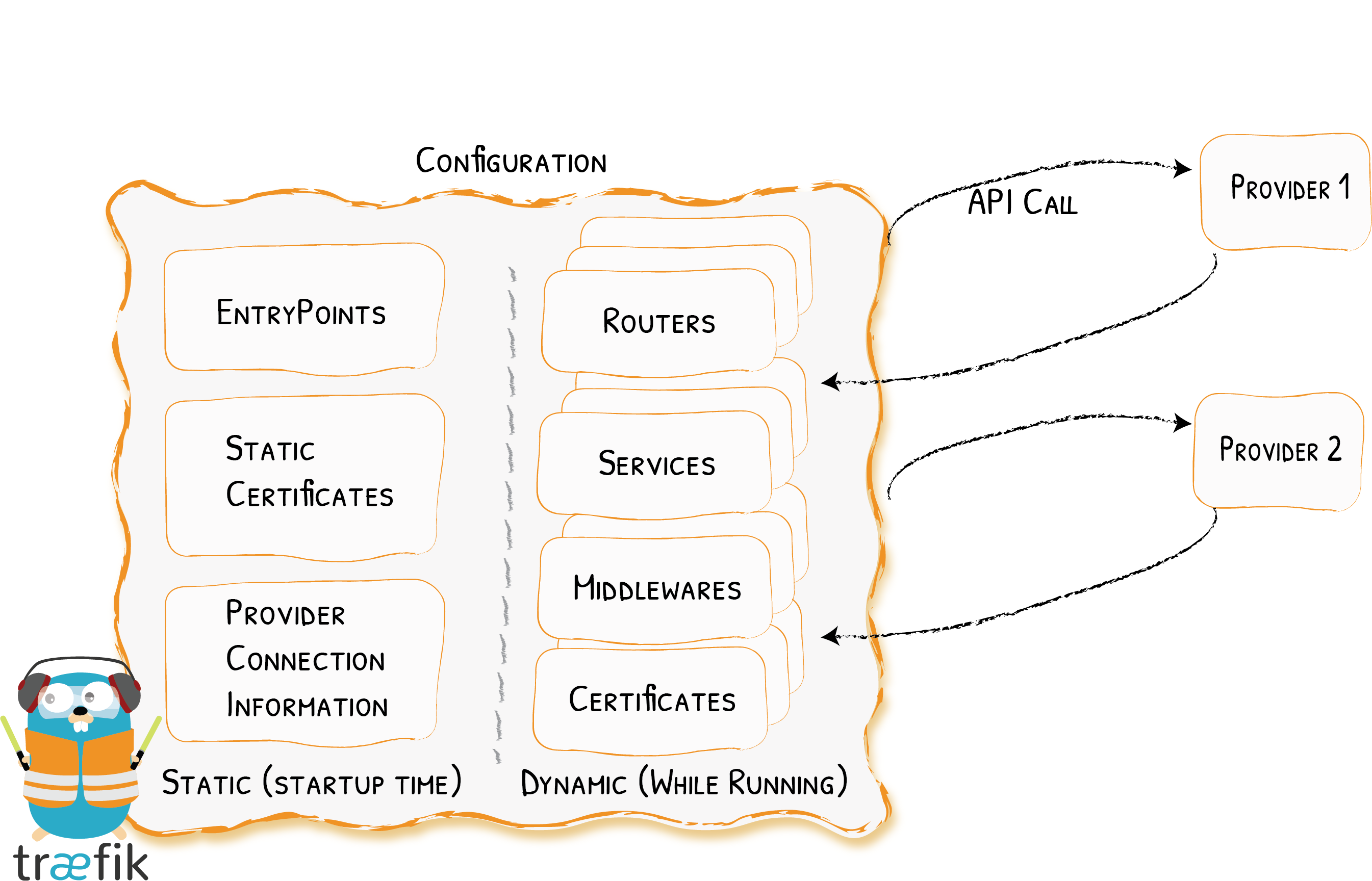3.3 KiB
Configuration Overview
How the Magic Happens {: .subtitle }
Configuration in Traefik can refer to two different things:
- The fully dynamic routing configuration (referred to as the dynamic configuration)
- The startup configuration (referred to as the static configuration)
Elements in the static configuration set up connections to providers and define the entrypoints Traefik will listen to (these elements don't change often).
The dynamic configuration contains everything that defines how the requests are handled by your system. This configuration can change and is seamlessly hot-reloaded, without any request interuption or connection loss.
The Dynamic Configuration
Traefik gets its dynamic configuration from providers: wether an orchestrator, a service registry, or a plain old configuration file. Since this configuration is specific to your infrastructure choices, we invite you to refer to the dedicated section of this documentation.
!!! Note
In the [Quick Start example](../getting-started/quick-start.md), the dynamic configuration comes from docker in the form of labels attached to your containers.
!!! Note
HTTPS Certificates also belong to the dynamic configuration. You can add / update / remove them without restarting your Traefik instance.
The Static Configuration
There are three different locations where you can define static configuration options in Traefik:
- In a key-value store
- In the command-line arguments
- In a configuration file
If you don't provide a value for a given option, default values apply.
!!! important "Precedence Order"
The following precedence order applies for configuration options: key-value > command-line > configuration file.
It means that arguments override configuration file, and key-value store overrides arguments.
!!! important "Default Values"
Some root options are enablers: they set default values for all their children.
For example, the `--providers.docker` option enables the docker provider.
Once positioned, this option sets (and resets) all the default values under the root `providers.docker`.
If you define child options using a lesser precedence configuration source, they will be overwritten by the default values.
Configuration File
At startup, Traefik searches for a file named traefik.toml in /etc/traefik/, $HOME/.traefik/, and . (the working directory).
You can override this using the configFile argument.
traefik --configFile=foo/bar/myconfigfile.toml
Arguments
Use traefik --help to get the list of the available arguments.
Key-Value Stores
Traefik supports several Key-value stores:
Available Configuration Options
All the configuration options are documented in their related section.
You can browse the available features in the menu, the providers, or the routing section to see them in action.
